<< Back home
5 Restorative
Pt TikTok videography
Caries risk
O'Leary Plaque Index: percentage of Surfaces w/ plaque present, divided by Total number of surfaces present
Caries risk assessment form
DMFS (Decayed, Missing, Filled, Surfaces): there are 5 surfaces on posterior teeth, and 4 surfaces on anterior teeth (doesn't count incisal). D includes carious or restored, M is extracted, F is caries filled or defectively filled for caries but not decayed. The total count is 128 (not inc 8's) or 148 surfaces (inc 8's)
ICDAS (International Caries Detection and Assessment System):
![]()
Caries risk assessment form
DMFS (Decayed, Missing, Filled, Surfaces): there are 5 surfaces on posterior teeth, and 4 surfaces on anterior teeth (doesn't count incisal). D includes carious or restored, M is extracted, F is caries filled or defectively filled for caries but not decayed. The total count is 128 (not inc 8's) or 148 surfaces (inc 8's)
ICDAS (International Caries Detection and Assessment System):

Saliva testing
Composite restoration
• (Ball burnisher)
• (Flat plastic)
• Curing light, w/ Curing shield
Tofflemire:
Automatrix:
V-ring:
• (Flat plastic)
• Curing light, w/ Curing shield
Tofflemire:
Automatrix:
V-ring:
Temporization
Fuji 9 restoration:
• Dentin conditioner• Press, click twice, Amalgamation
• Fuji 9 restoration via Fuji gun
• Articulating paper
Fuji 7 or 2 restoration:
• Fuji 7 or 2 restoration via Fuji gun• Curing light, w/ Curing shield
• Articulating paper
Fissure sealant
Type 1:
• Etch
• Fissure sealant
Type 2:
• Dentin conditioner
• Fuji 9
• Etch
• Fissure sealant
Type 2:
• Dentin conditioner
• Fuji 9
Composite strip crown
LA for
Upper teeth
Supraperiosteal (Local) infiltration
Short needle
Anesthesia of any individual tooth or soft tissue in a localised area of the maxillary dentition

Anesthesia of any individual tooth or soft tissue in a localised area of the maxillary dentition

PSAN/tuberosity/zygomatic block
Short needle
Anesthesia of all upper molar teeth, w/ exception of the MB root of 6 in some cases
Anesthesia of all upper molar teeth, w/ exception of the MB root of 6 in some cases

MSAN block
Short needle
Anesthesia of upper PM teeth or MB root of 6, although not always present
Anesthesia of upper PM teeth or MB root of 6, although not always present

Infraorbital (ASA) nerve block
Long needle
Anesthesia of incisors and canine and soft tissue on buccal aspect. For Pt's who don't have MSA nerve, it may also innervate premolar teeth and MB root of 6
Anesthesia of incisors and canine and soft tissue on buccal aspect. For Pt's who don't have MSA nerve, it may also innervate premolar teeth and MB root of 6

Great palatine nerve block
Long needle
Anesthesia of palatal aspect of upper PM and molars, targeting area just anterior to greater palatine canal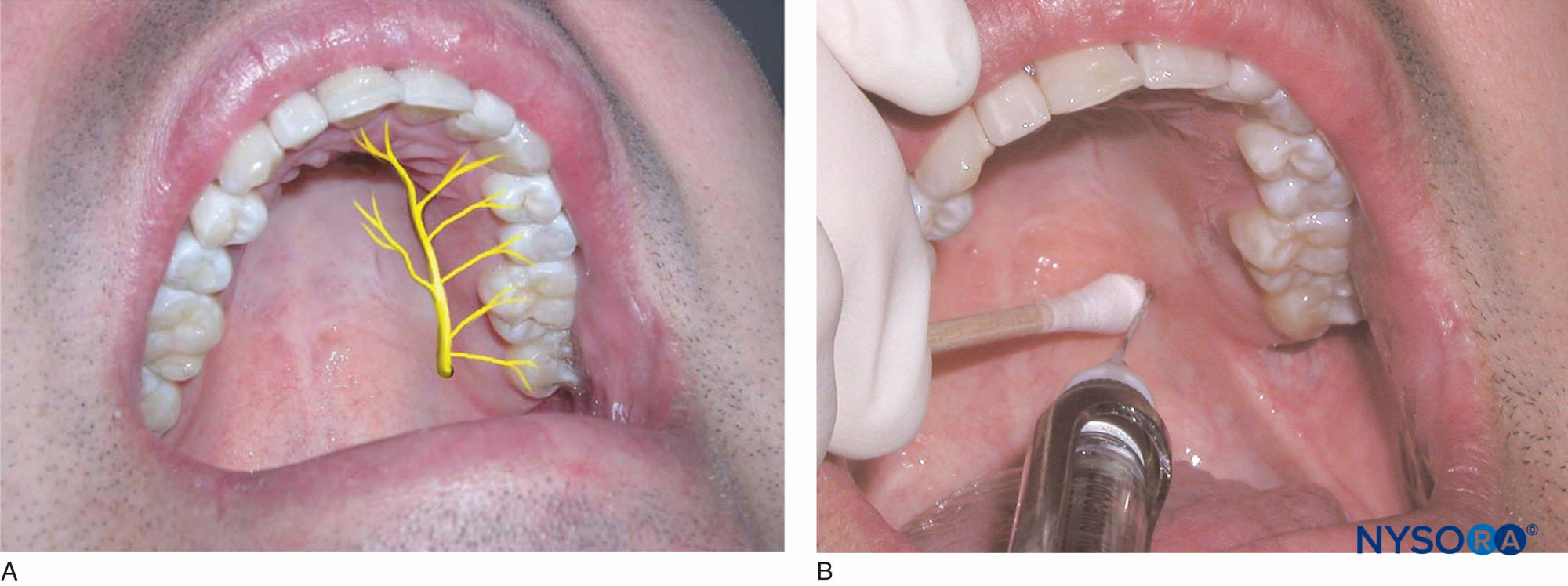
Anesthesia of palatal aspect of upper PM and molars, targeting area just anterior to greater palatine canal

Incisive/nasopalatine/sphenopalatine nerve block
Short needle
Anesthesia of nasopalatine nerves bilaterally, via deposition in area of incisive foramen, for anesthesia of lingual aspect of multiple anterior teeth
Anesthesia of nasopalatine nerves bilaterally, via deposition in area of incisive foramen, for anesthesia of lingual aspect of multiple anterior teeth

Local palatal infiltration
Short needle
Anesthesia of palatal of 1-2 teeth
Anesthesia of palatal of 1-2 teeth

Both upper and lower teeth
Intraligamentary (PDL) injection
Short needle
Useful adjunct to supraperiosteal injection or nerve block, to achieve profound anesthesia of area individual tooth or teeth, or soft tissue in immediate vicinity to be Tx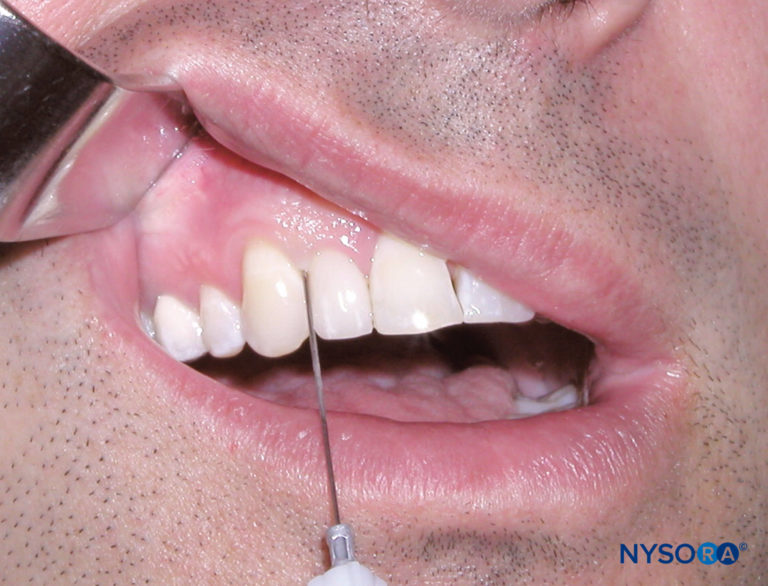
Useful adjunct to supraperiosteal injection or nerve block, to achieve profound anesthesia of area individual tooth or teeth, or soft tissue in immediate vicinity to be Tx

Intraseptal injection
Short needle
Useful adjunct to other maxillary techniques, although not often used in clinical practice, offers added advantage of hemostasis in area of injection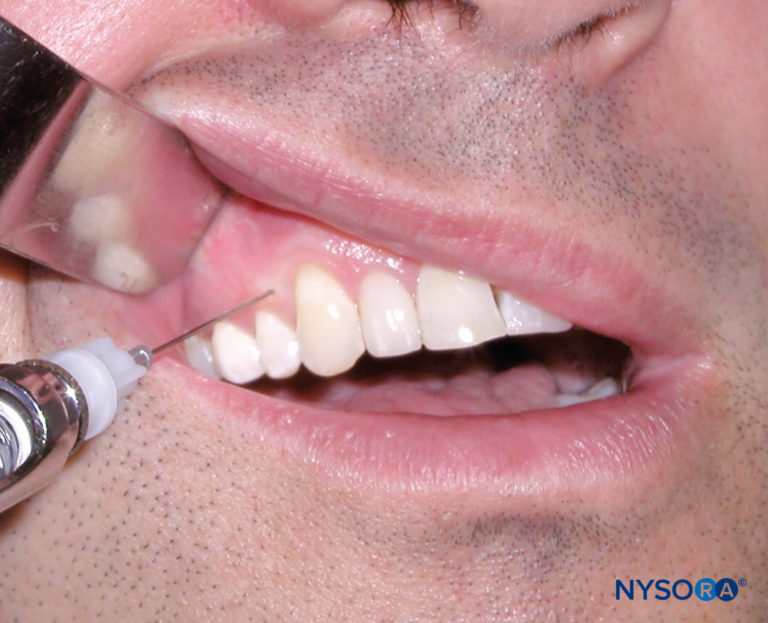
Useful adjunct to other maxillary techniques, although not often used in clinical practice, offers added advantage of hemostasis in area of injection

Lower teeth
IAN block
Long needle
Most commonly used mandibular anesthesia, when multiple teeth in 1 quadrant require Tx, however has high failure rate, targeting mandibular nerve as it travels along medial aspect of ramus before entry into mandibular foramen
Most commonly used mandibular anesthesia, when multiple teeth in 1 quadrant require Tx, however has high failure rate, targeting mandibular nerve as it travels along medial aspect of ramus before entry into mandibular foramen

Long buccal nerve/buccinator block
Long needle
Useful adjunct to IAN when manipulation of B soft tissue in lower molar region indicated, targeting buccal nerve as it passes over anterior aspect of ramus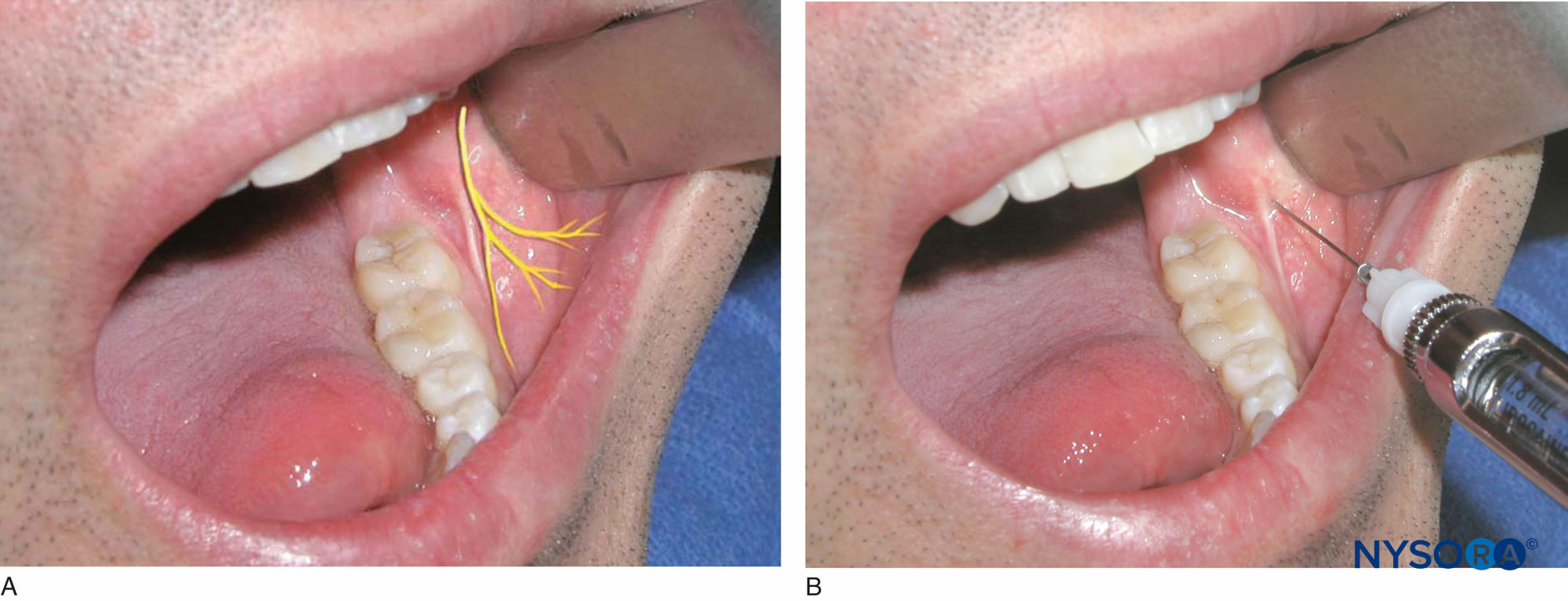
Useful adjunct to IAN when manipulation of B soft tissue in lower molar region indicated, targeting buccal nerve as it passes over anterior aspect of ramus

Gow Gates/3rd division nerve block technique
Long needle
Useful alternative to IAN block often used when IAN fails to provide adequate anesthesia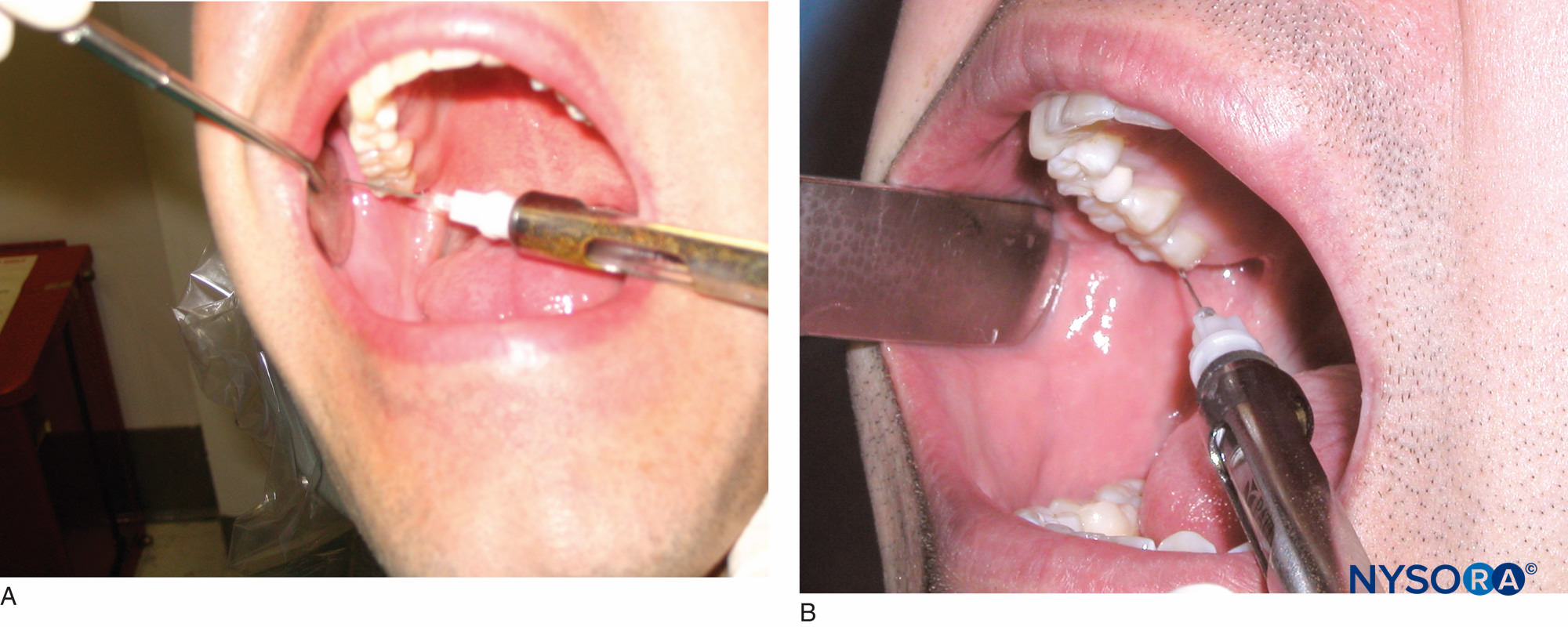
Useful alternative to IAN block often used when IAN fails to provide adequate anesthesia

Mental and Incisive nerve blocks
Short needle
Mental nerve block for anesthesia for manipulation of B soft tissue anterior to mental foramen necessary. Incisive nerve block not as frequently used in clinical practice, when Tx limited to lower anterior teeth and full quadrant anesthesia not required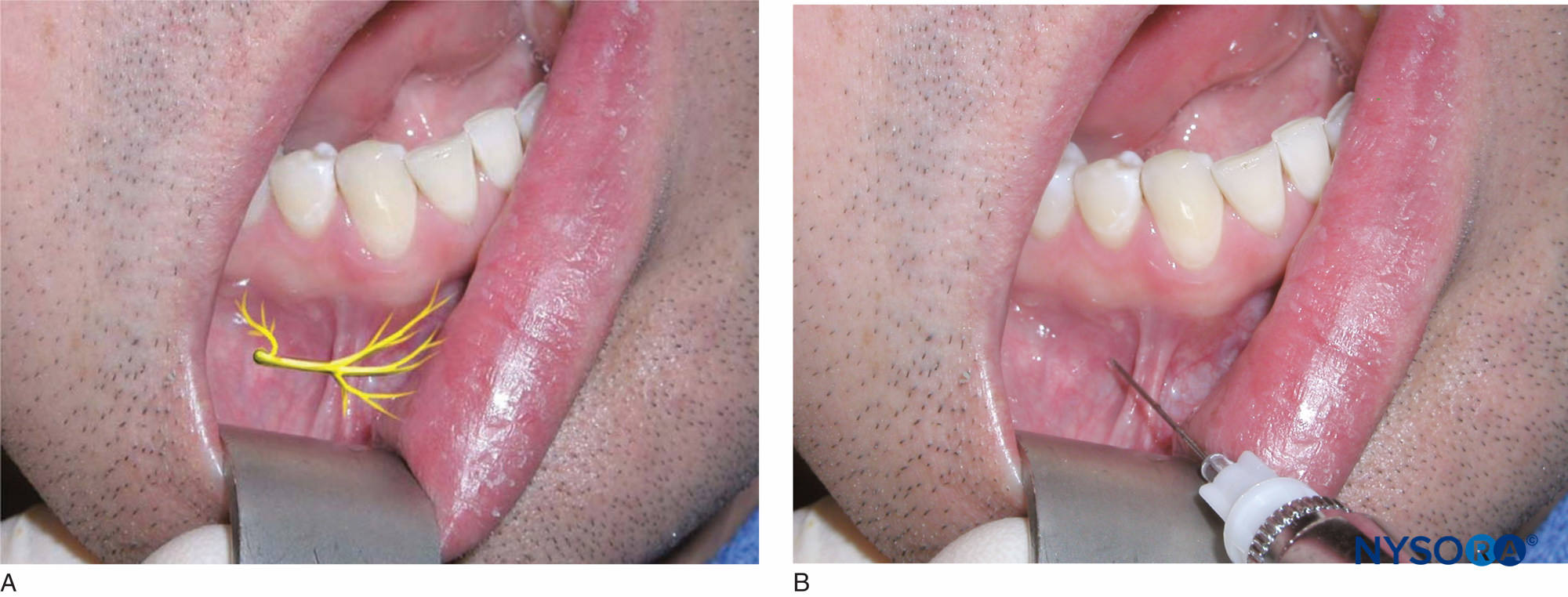
Mental nerve block for anesthesia for manipulation of B soft tissue anterior to mental foramen necessary. Incisive nerve block not as frequently used in clinical practice, when Tx limited to lower anterior teeth and full quadrant anesthesia not required

Pulp protection
Vitrebond (3M)
• Light-cured RMGIC
• 1 level scoop of powder w/ 1 drop of liquid until mix is homogeneous
• Apply as thin coat / Liner
• LIght cure for 30 seconds
• 1 level scoop of powder w/ 1 drop of liquid until mix is homogeneous
• Apply as thin coat / Liner
• LIght cure for 30 seconds
Dycal (Dentsply)
• Calcium hydroxide Self-cured
• Mix equal quantities of base and catalyst until mix is homogeneous
• Wait 2-4 mins to set
• Mix equal quantities of base and catalyst until mix is homogeneous
• Wait 2-4 mins to set
Dental adhesives
Optibond XTR (Kerr)
• 2-step self-etch, light-cured
• Apply primer, scrub surface w/ brushing motion for 20s
• Air thin for 5s w/ medium air pressure
• Apply adhesive w/ light brushing motion for 15s
• Air thin for 5s
• Light cure for 10s
• Apply primer, scrub surface w/ brushing motion for 20s
• Air thin for 5s w/ medium air pressure
• Apply adhesive w/ light brushing motion for 15s
• Air thin for 5s
• Light cure for 10s
Restorative
Premise (Kerr Corporation)
Estelite Sigma Quick (Tokuyama Dental America Inc)
Dental adhesives
Fuji
• Light cure for 20 seconds
• Activate (shape capsule, push the plunger until flush w/ main body, place into GC capsule applier and click once)
• Mix in amalgamator for 10 seconds
• Conditioner for GI or RMGIC
• Apply w/ cotton pellet for 20 s
• Rinse w/ water
• Dry w/o complete desiccation
• Working time 3m 15s
• Working time 2 mins
• Sets FASTER than Fuji 9 normal, so working time <2 mins
• Pink, so only provisional restorations
• Working time 1m 40s
• Apply w/ cotton pellet or brush
• Light-cure for 10s
• Activate (shape capsule, push the plunger until flush w/ main body, place into GC capsule applier and click once)
• Mix in amalgamator for 10 seconds
Dentin conditioner (GC)
• 10% polyacrylic acid solution• Conditioner for GI or RMGIC
• Apply w/ cotton pellet for 20 s
• Rinse w/ water
• Dry w/o complete desiccation
Fuji 2 Light Cure (GC)
• Light-cured RMGIC• Working time 3m 15s
Fuji 9 (GC)
• GIC• Working time 2 mins
Fuji 9 Extra (GC)
• GIC• Sets FASTER than Fuji 9 normal, so working time <2 mins
Fuji 7 (GC)
• GIC• Pink, so only provisional restorations
• Working time 1m 40s
Fuji Coat (GC)
• Varnish for protection of GIC, Light-cured• Apply w/ cotton pellet or brush
• Light-cure for 10s
Conceal f (SDI)
• Flowable resin composite Light-cured
• Pit and fissure sealants
• Pit and fissure sealants